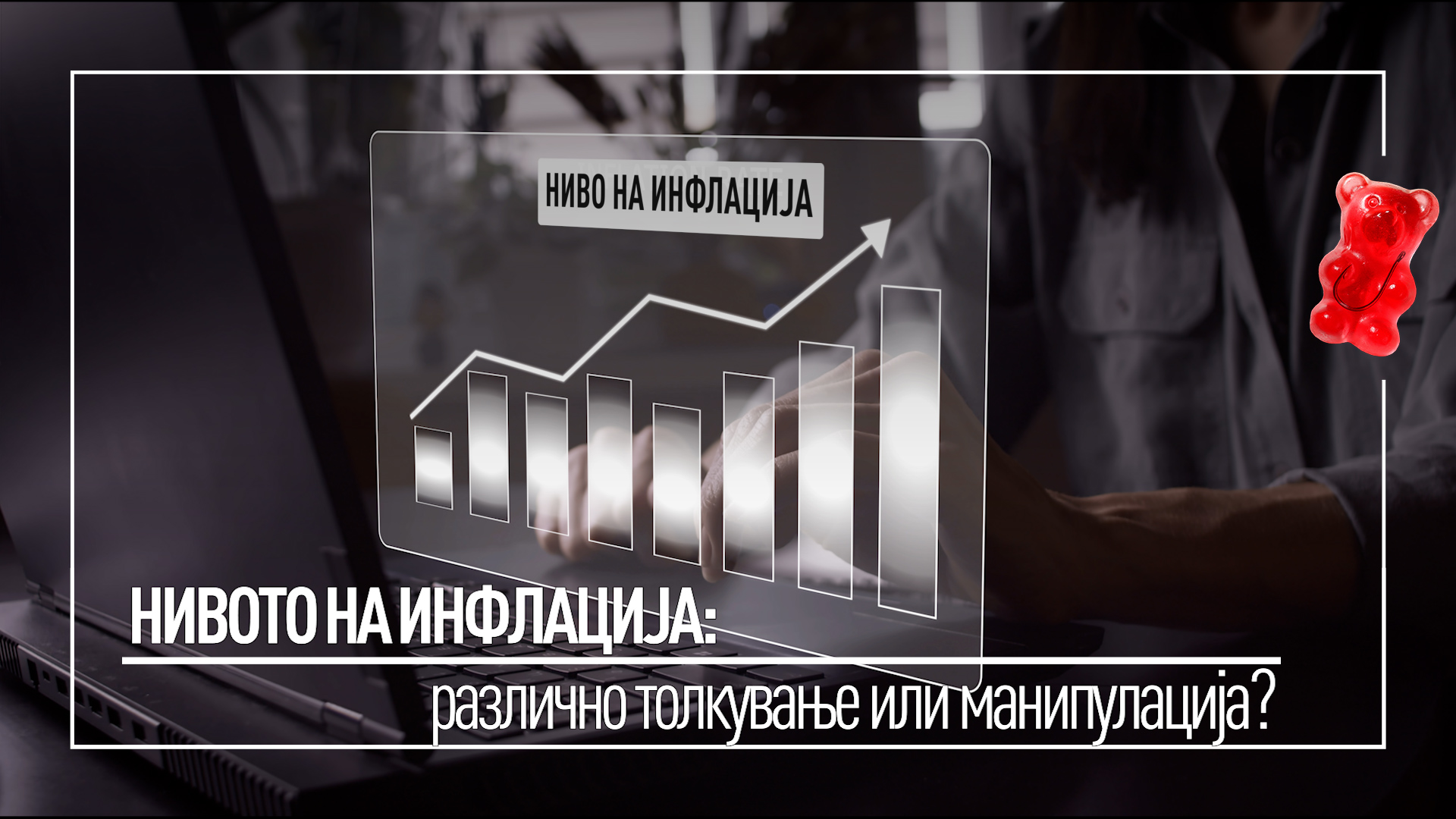The problem with the presentation of the level of public debt
The topic we want to clarify in this video is how much the state is in debt. This issue, if not presented accurately, can lead to incorrect conclusions in the public. Why? Because very often we have contradictory, but completely correct data. On the one hand, the public debt is constantly increasing in absolute amount, but on the other hand, it is relatively decreasing, measured as its percentage share in the gross domestic product.
What is public debt and what is GDP?
But first let’s clarify the two terms I mentioned – public debt and gross domestic product.
Public debt is the sum of everything owed by the Government, state and municipal public enterprises and trading companies, as well as the municipalities together with the City of Skopje.
Gross domestic product or GDP is literally everything that is produced or provided as a service in the country within a year expressed in money.
On 30 June 2023, for example, the total public debt of Macedonia amounted to 8.337 billion euros and represented 57.9% of the Macedonian GDP.
The interpretation of the share of public debt in GDP
But here, there are also certain problems arising from the interpretation of the share of public debt in GDP.
The nominal value of the public debt is a clear and unambiguous category and it is precise in accounting. For example, it grew from 6.483 billion euros in 2020 through 7.135 billion euros in 2021; and 7.703 billion euros in 2022 to 8.337 billion euros in June 2023.
It is obvious that the public debt is growing. But on the contrary, its share in GDP, which is a much more relevant figure, has decreased. It is due to the growth of the GDP, but also to the fact that the nominal growth of the gross domestic product due to inflation is also growing rapidly. That is why nominal GDP usually grows with the growth of inflation, although real GDP can stagnate or even decrease.
Simplified, to understand, inflation increases the value of nominal gross domestic product, because if inflation is high, the value of produced goods and services in money grows, but very often the volume, that is, the quantity of products and services, does not grow.
For example, in one year the Macedonian economy produced 100 different units of goods and services and they had a total final market value of 1,000 denars. That in our simplified example is the gross domestic product. If next year inflation is 15 percent, the 100 produced goods and services would be worth 1,150 denars. This shows that the real volume of the economy has not grown, it still provides the same number of goods and services, but their value on the market has grown due to inflation, that is, the nominal gross domestic product has increased.
It may happen that the produced quantities even decrease, and the value of the gross domestic product, which is not expressed in money, increases. Public debt, on the other hand, even though it is nominal, does not grow with inflation but remains at the same value when it was created or issued. In that case, although the value of the debt did not increase, its share in GDP decreased accordingly. Hence, different aspects of the state of public debt can be presented to the public, depending on whether we want to present it as growing, in its absolute value, or falling, through its relative, i.e. percentage share in GDP. That confusion should be explained in the elaboration.




 Оваа веб-страница е изработена во рамките на проектот „Употреба на новинарство засновано на факти за подигање на свеста и спротивставување на дезинформациите во медиумскиот простор во Северна Македонија (Користи факти)“, кој се реализира од Институтот за комуникациски студии. Проектот е финансиран од Владата на Обединетото Кралство, со поддршка на Британската амбасада во Скопје. Мислењата и ставовите наведени на оваа веб-страница не ги одразуваат секогаш мислењата и ставовите на Британската Влада.
Оваа веб-страница е изработена во рамките на проектот „Употреба на новинарство засновано на факти за подигање на свеста и спротивставување на дезинформациите во медиумскиот простор во Северна Македонија (Користи факти)“, кој се реализира од Институтот за комуникациски студии. Проектот е финансиран од Владата на Обединетото Кралство, со поддршка на Британската амбасада во Скопје. Мислењата и ставовите наведени на оваа веб-страница не ги одразуваат секогаш мислењата и ставовите на Британската Влада.